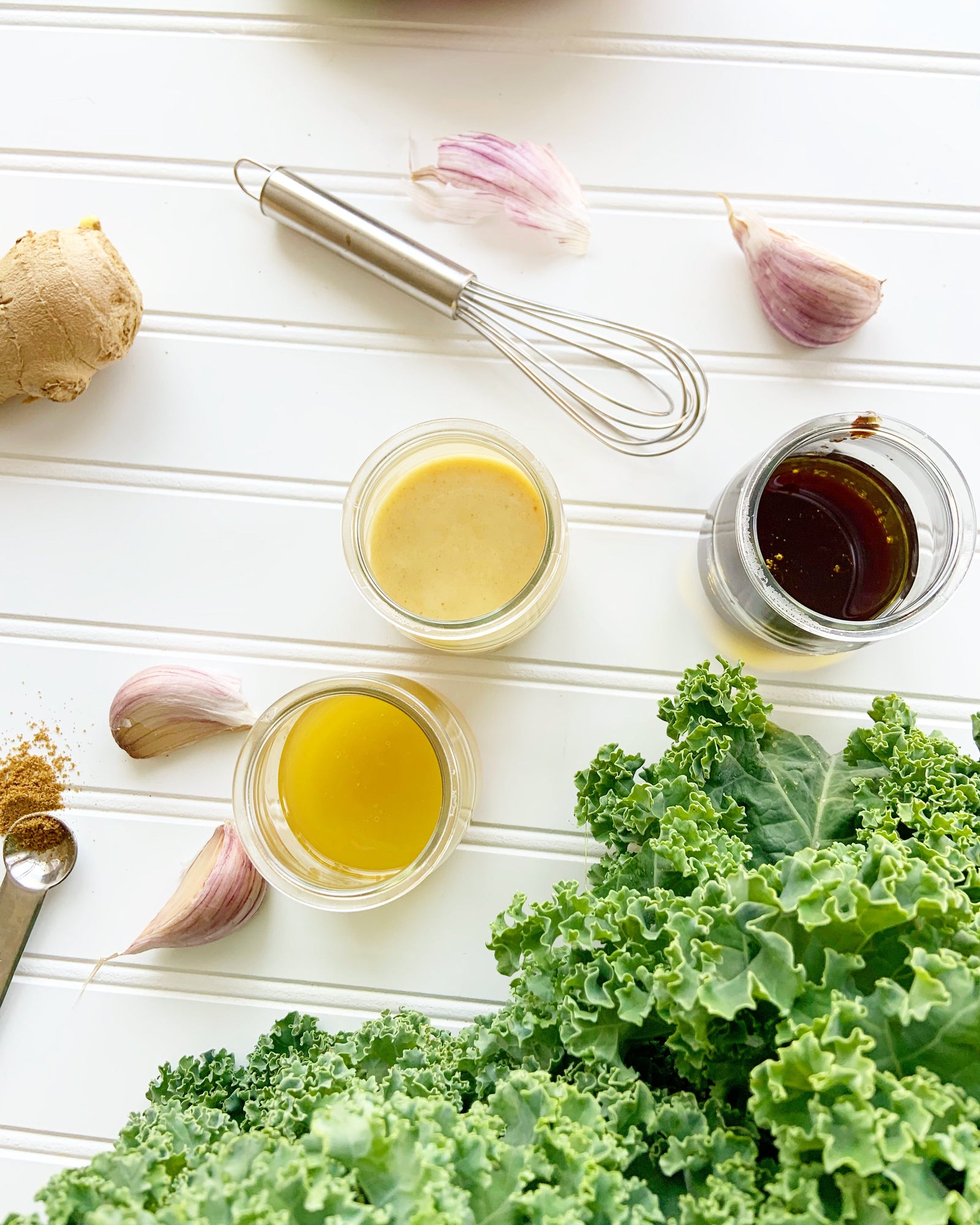Why Lactobacillus acidophilus is Good to Have Living In Your Gut
Part of the Monthly Microbe feature I created for the International Probiotic Association - a cool place to learn about helpful microbes.
Meet Lactobacillus acidophilus
Let us introduce you to the most famous probiotic of all, Lactobacillus acidophilus. It's so famous Lactobacillus acidophilus deserves a star on the microbiome walk of fame.
Despite it's latin name, it's actually really quite easy to learn about this helpful probiotic. Firstly, Lactobacillus acidophilus means “acid-loving”. Secondly, this microbe has been made famous by its presence in fermenting dairy products - and, you can find lots of these teeny, tiny microbes in the human body. Yes, in your body. There are so many cool things that this microbe does for you!
Come on! Grab a microscope and take a closer look at a Lactobacillusacidophilus microbe - you’ll see its rod-like shape, with rounded ends. Despite its tiny size and friendly-looking appearance, Lactobacillus acidophilus have some impressively powerful abilities. Ramp up the magnification on your microscope and let's take a closer look at Lactobacillus acidophilus and what researchers know it does to improve your health.

Lactobacillus acidophilus - Where Can I Find It?
Looking at a dairy product with your microscope, such as L. acidophilus-containing milk or yogurt, and you will be in luck! You can find Lactobacillus acidophilus there, and in your gut.
What's the Most Impressive Thing About Lactobacillus acidophilus?
What’s really impressive is how Lactobacillus acidophilus can move into your intestinal tract, a place as populace with bacteria as New York City is with people, and become a big influencer in about a day. (This is great news when you have certain types diarrhea – more below). No wonder Lactobacillus acidophilus is so popular!
Why is Lactobacillus acidophilus so famous?
When you are running to the bathroom, thanks to the quick onset of certain types of diarrhea, quick relief is key. Lactobacillus acidophilus may help with diarrhea caused by some bad microbes. Diarrhea can strike when too many bad guys (called pathogenic bacteria) decide to take over too much territory in your intestinal tract. You can just imagine how an unwanted and disorderly parade could take over Fifth Avenue and disrupt function in New York City. But, how does such a parade start? Some times, antibiotics are great at destroying bacteria causing illness. But, the downside is that antibiotics can’t decipher between the bad bacteria and other bacteria, (including innate bacteria found in the intestine and “good" bacteria). The result of taking an antibiotic sometimes is lower levels of “good” bacteria in the body, which makes it easier for pathogenic microbes to move into the neighborhood. Oh, no! There goes the neighbourhood!
Perhaps the reason Lactobacillus acidophilus is so popular is that it, among other probiotics, is great at protecting your gut from bad guys who want to disrupt your intestinal tract’s usual healthy flow. Talk about being the good guys in town. Lactobacillus acidophilus is the kind of neighbor- you want to have live in your internal microbial city.
Will Lactobacillus acidophilus help with constipation?
This teeny, tiny microbe does some pretty cool things for you! Lactobacillus acidophilus does a lot in your gut. According to research studies, Lactobacillus acidophilus, along with its friend Bifidobacterium bifidum, can help accelerate the flow of contents through the intestine. That’s awesome – particularly if you’re struggling with constipation. May your visits to the porcelain throne be a more royal experience thanks to our helpful neighbourhood probiotic, Lactobacillus acidophilus.
Lactobacillus acidophilus - What is it good for?
In most epic tales, good prevails over evil, and the story of the intestinal microflora is very similar. In your gut, one character playing the role of a good guy is Lactobacillus acidophilus. Well adapted to live in the human body, once Lactobacillus acidophilus moves into the intestinal tract, it’s capable of inhibiting pathogenic bacteria, such as E. coli and Enterobacter ssp. These pathogenic bacteria are the bad guys in this epic tale. Present in some of the food we eat, pathogenic bacteria are always trying to sneak their way into a good spot in your intestinal tract, where it can set up camp, grow its army, establish a settlement, and plot a siege. As in storybooks, when evil prevails, conditions deteriorate – the same is true in your gut. When pathogenic bacteria are allowed to infiltrate the gut, the lining becomes less healthy, nutrient absorption is reduced, and the immune system is activated inducing an inflammatory reaction. All in all, your gut can feel awful, food isn’t digested as well, the immune system is working hard, and messages to other parts of your body, such as your brain, are not as positive. Thank goodness this tale has the option of an ending of, “lived happily ever after” when our hero Lactobacillus acidophilus, and other probiotic species, are around in adequate amounts.
Similar to a castle, the gut has battlements. Well, it is not exactly the tooth-shaped parapets like a historical castle battlement, but regardless the mucus barrier of the gut is pretty effective at keeping the bad guys out. You can thank probiotics, such as our hero of this tale, Lactobacillus acidophilus, who work to keep the integral mucus layer of the gut strong. Studies have shown probiotics are involved in the maturation and function of the mucosal layer. When the mucosal layer is dysfunctional, as seen in human studies of colitis, the gut lining becomes inflamed and infection can occur. Ouch! The low-fiber Western diet common in modern society doesn’t help – researchers have found it contributes to defects in the mucosal layer. Yikes! What can we do about it? Probiotics enjoy a diet that’s rich in fiber. Health experts, such as those at the Mayo Clinic suggest it’s a healthy choice to eat more fiber, such as fruits, vegetables, nuts, seeds, beans, and whole grains. In our little microbial tale, eating fiber is almost like arming your gut’s good guys so they can better defend the castle.
The mucosal surface of the gastrointestinal tract is only the first line of defense. The second way our hero, Lactobacillus acidophilus fends off pathogenic bacteria is with the production of antimicrobial proteins, called bacteriocins, and lactic acid (by breaking down carbohydrates from the food you eat). One can just imagine our friendly, teeny, tiny probiotics throwing flaming balls (bacteriocins) over the castle walls at an approaching enemy. Some bacteriocins produced by Lactobacillus acidophilus attack the cell wall of pathogenic bacteria, affecting its formation and permeability. This intestinal warfare might sound gruesome, but it ultimately causes them to somewhat leak to death. Understandably, pathogenic bacteria don’t like this hostile environment and are less likely to try to move in and disrupt health.
Other Cool Things Lactobacillus acidophilus Does for Your Body
Before we go, let’s give a round of applause to our amazing neighbor, the good guy in our epic tale, Lactobacillus acidophilus who promotes health in the human body. In your mouth, Lactobacillus acidophilus prevents the bad guy, Streptococcus mutans, from setting up camp and creating plaque that leads to the formation of dental caries (cavities). Another cool skill of Lactobacillus acidophilus is it produces the enzyme lactase. Lactase is like scissors that help break down lactose, the sugar in milk, into smaller pieces so it is easier to digest. You can thank Lactobacillus acidophilus, for making warm summer afternoons spent licking ice cream more enjoyable. (They may not have ears, but your gut microbes might appreciate the thank you).
6 Ways Lactobacillus acidophilus Promotes Health
Here are a few other ways certain strains of Lactobacillus acidophilus promote health in the body (...just in case you weren’t already in love with our famous, walk of fame-worthy, monthly microbe):
- Battles Vaginal Yeast Infections
- Lowers Cholesterol
- Fights Heart Burn (caused by pathogenic bacteria)
- Battles Diarrhea/Constipation
- Enhances Immune Function
- Promotes Weight Management
- Reduces Digestive Symptoms for Runners
Is Lactobacillus acidophilus safe?
These residents of the human microbiome, are amazingly helpful to have around, and should not be feared. The human body cannot function optimally without them. Significant amounts of scientific evidence show Lactobacillus acidophilusis not only safe but improves the health of the host (you).
What are the side effects of Lactobacillus acidophilus?
Probiotics have few side effects, rarely causing minor gastrointestinal symptoms, such as gas. Individuals with underlying health conditions should consult their health practitioner regarding probiotic use.
References
In case you want to GEEK OUT on probiotic research, and learn more of the scientific details of this really cool probiotic, here are some of the studies mentioned in this blog. Enjoy!
The impact of dietary fiber on gut microbiota in host health and disease. Cell Host & Microbe 2018 June, 23:705-715.
The effectiveness of probiotics in the treatment of inflammatory bowel disease (IBD) – a critical review. Nutrients 2020 Jul; 12(7):1973.
Bacteria penetrate the normally impenetrable inner colon mucus layer in both murine colitis models and patients with ulcerative colitis. Gut 2014; 63:281-91.
The use of probiotics to fight biofilms in medical devices: a systematic review and meta-analysis. Microorganisms 2021 Jan; 9(1):27.
A practical guide for probiotics applied to the case of antibiotic-associated diarrhea in The Netherlands. BMC Gastroenterology 2018;18(103).
The effect of probiotics supplementation on Helicobacter pylori eradication rates and side effects during eradication therapy: a meta-analysis. PLoS One 2014 Nov 3;9(11):e111030.
Mechanisms and therapeutic effectiveness of lactobacilli. J Clin Pathol 2016 Mar; 69(3): 187-203.
Impact of a probiotic product on bowel habits and microbial profile in participants with functional constipation: a randomized controlled trial. J Dig Dis 2019 Sep;20(9):435-446.
Lactobacillus acidophilus DDS-1 and Bifidobacterium lactis UABla-12 improve abdominal pain severity and symptomology in irritable bowel syndrome: randomized controlled trial. Nutrients 2020 Jan 30;12(2):363.
Intestinal microbiota and chronic constipation. Springerplus 2016; 5(1):1130.
Effects of probiotics on the recurrence of bacterial vaginosis: a review. J Low Genit Tract Dis 2014 Jan;18(1):79-86.
Four weeks of probiotic supplementation reduces GI symptoms during a marathon race. Eur J Appl Physiol 2019 Jul;119(7)) 1491-1501.
The gut microbiome and its role in obesity. Nutr Today 2016 Jul-Aug; 51(4):167-174.
Probiotics for the treatment of overweight and obesity in humans – a review of clinical trials. Microorganisms 2020 Aug; 8(8):1148.
The impact of probiotic yogurt consumption on lipid profiles in subjects with mild to moderate hypercholesterolemia: A systematic review and meta-analysis of randomized controlled trials. Nutr Meta Card Dis 2020 Jan 3;30(1):11-22.
The effects of exercise on indirect markers of gut damage and permeability: a systematic review and meta-analysis. Sports Med 2021 Jan;51(1):113-124.
Effect of Lactobacillus on body weight and body fat in overweight subjects: a systematic review of randomized controlled clinical trials. Int J Obes (Lond) 2017 Nov;41(11):1607-1614.
Also in Blog

The Microbiome Diet: Gut Health, the Human Microbiome and Your Health
Your guide to the human microbiome, with insights into the Microbiome Diet, and whether it can improve your health, including indigestion.

Why Can't I Sleep: Your Guide to Better Sleep




